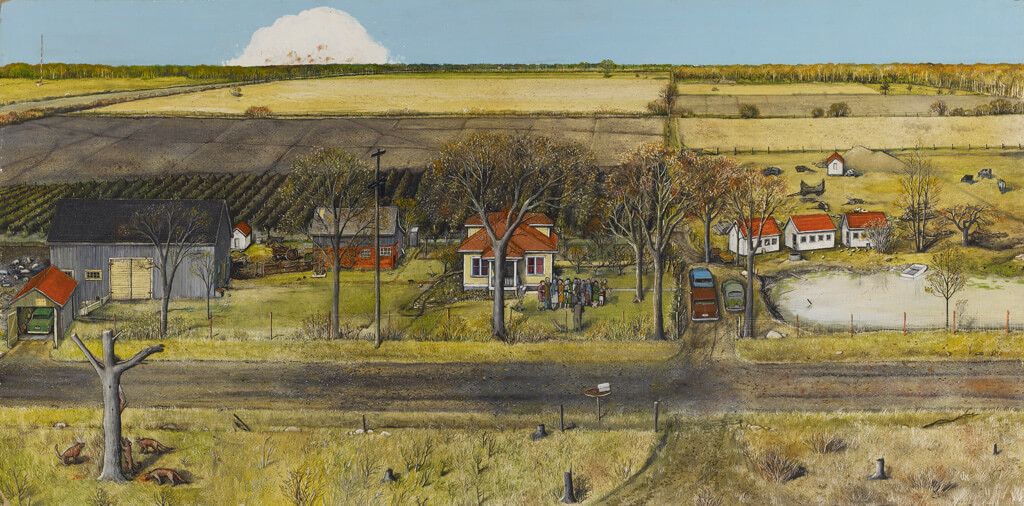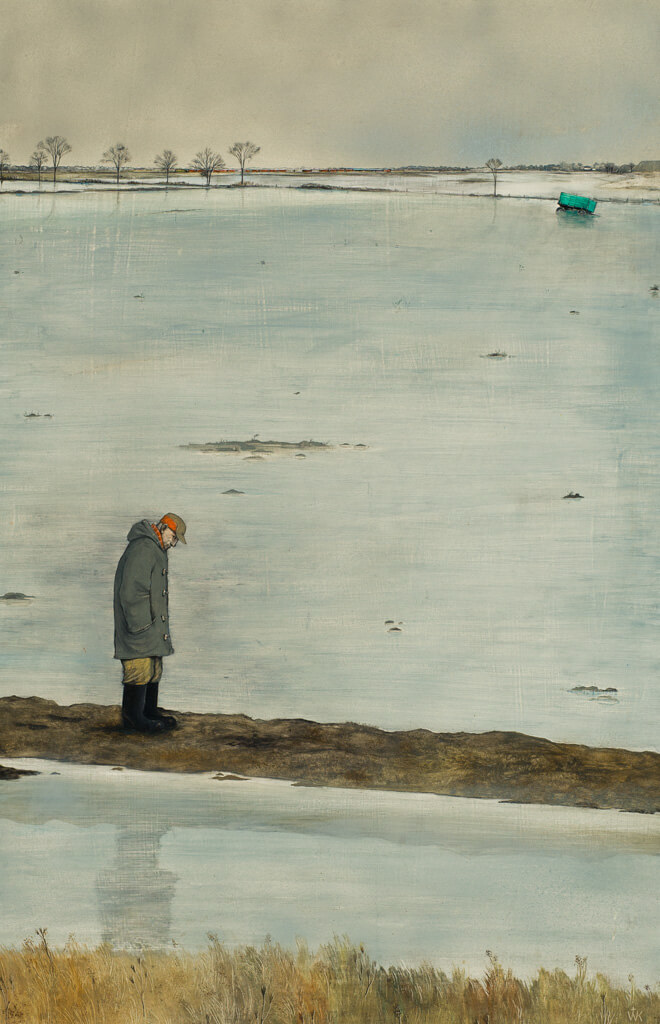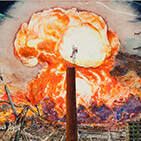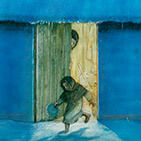In the Autumn of Life 1964

William Kurelek, In the Autumn of Life, 1964
Oil on tempered hardboard, 59.1 x 120.3 cm
Art Gallery of Ontario, Toronto

This is the final canvas in the series An Immigrant Farms in Canada, twenty paintings Kurelek exhibited at Isaacs Gallery, Toronto, in September 1964. Completed in part as a reaction to the 1962 Cuban Missile Crisis, the painting also represents the first example of the artist incorporating an exploding atom bomb within an otherwise bucolic pastoral landscape. Kurelek repeated this juxtaposition in a number of notable later works as well, including Material Success, 1967, and the final panel of The Ukrainian Pioneer, 1971, 1976.
The series, which included works such as Despondency, 1963, and Manitoba Party, 1964, details the journey of farming families from Ukraine to Western Canada and eventually their arrival in Southern Ontario. It recounts a progressive story from struggle to survival to economic security—a rational reconstruction of the immigrant narrative that at least one critic disparaged.
As the culminating work in the series, In the Autumn of Life presents an elevated view of Kurelek’s parents’ farm in Vinemount, Ontario. The agrarian setting plays backdrop to a family reunion, and the artist’s extended family are shown gathered for a group photograph. Kurelek appears in the family grouping, fifth from the right. Although he employs some artistic licence, the painting was largely plotted and composed using photographs that recorded a Kurelek family gathering of a year earlier and shots documenting the property’s architectural and topographical features.
Closer study of the painting reveals several disquieting elements that undermine the painting’s function as a sincere celebration of social mobility. A Christ figure appears in the bottom-left foreground, crucified on a dead tree and surrounded by ravenous dogs that clamour over the spilled blood. The dogs, Kurelek later wrote, “are supernatural” ones, referring to the enemies of Christ mentioned in the Book of Psalms. More foreboding still is the giant mushroom cloud that Kurelek uses as the iconic symbol of nuclear war and a reminder that technological advancement does not necessarily make for peace and harmony.

 About the Author
About the Author
 More Online Art Books
More Online Art Books
 Acknowledgements
Acknowledgements